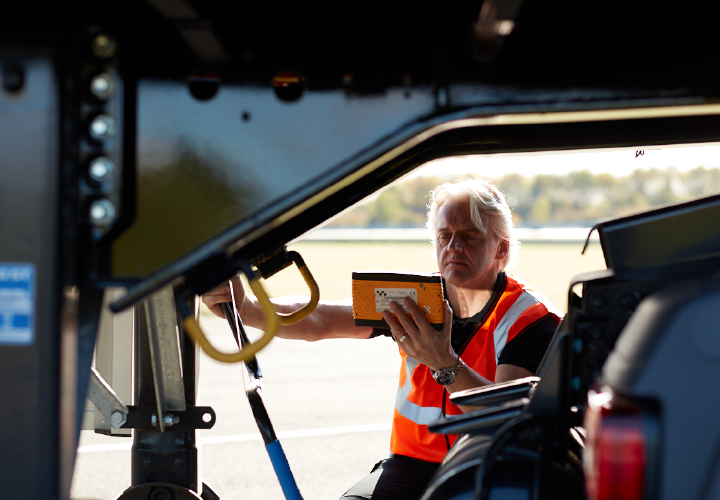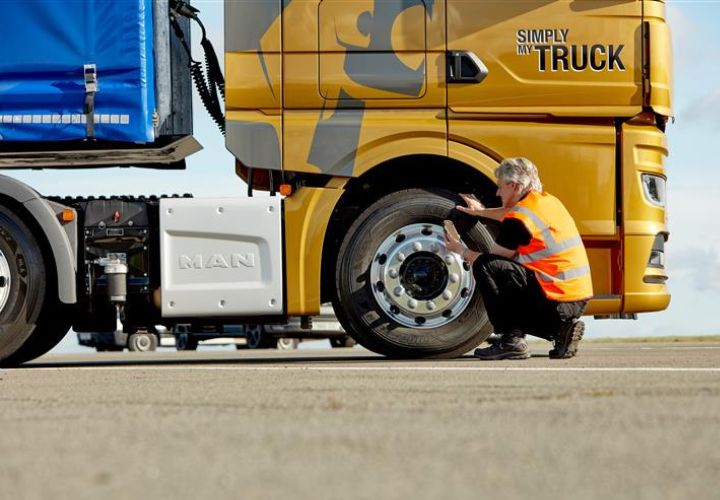In today's workforce, lone workers occupy a unique and often vulnerable position, performing their duties isolated from colleagues and direct supervision. Ensuring their safety isn't just a priority—it's a necessity.
Advances in technology are revolutionising the way we support these workers, enhancing their security and providing peace of mind for both employees and employers.
In our latest blog, we explore different types of lone workers, common threats, and ways that employers can go the extra mile in protecting their workforce, turning the spotlight on technology.

Types of lone workers
Lone workers can be found in a variety of industries, each facing distinct challenges and risks due to the solitary nature of their jobs. Lone workers include, but are not limited to:
Transport and delivery personnel:
Drivers and couriers who travel alone – particularly working anti-social hours or in less populated areas – face risks related to road safety, theft, and potentially hazardous cargo.
Construction workers:
On remote or small-scale construction sites, workers may find themselves alone for long stretches. The physical demands, coupled with the use of heavy machinery and the potential for severe accidents, heighten their risk.
Utility workers:
These include electricians, water, and telecom technicians who often work alone on infrastructure maintenance, frequently in remote areas or extreme conditions. The technical nature of the work and exposure to elements like electricity and heights add to their vulnerability.
Each type of lone worker requires tailored safety measures to mitigate the unique risks associated with their specific roles and environments. Understanding these roles is crucial for developing effective safety protocols and deploying appropriate technology to ensure their protection.
Common threats and ways to help
Lone workers, by the very nature of their roles, face a spectrum of risks that can affect their safety and well-being. These risks range from physical violence to the more insidious threats associated with prolonged isolation.
Recognising these challenges is the first step in creating effective strategies to mitigate them. And employers play a crucial role in this process, implementing comprehensive measures to ensure their workers are not only protected but also feel supported throughout their workday.
Common threats faced by lone workers include:

1. Violence:
Some workers often face risks of aggression from clients or the wider public. Employers can mitigate these threats by implementing safety training and providing access to emergency contacts through safety devices or apps.

2. Stress and health:
Lone workers can experience high levels of stress due to isolation and the demanding nature of their roles. Regular check-ins, mental health support, and emergency health services can be crucial.

3. Training, supervision, and monitoring:
Effective training on safety protocols and the use of monitoring technologies can help ensure workers are safe and feel supported. Supervision through regular communications can also keep morale high and confirm safety.

4. Policy:
A clear and comprehensive safety policy tailored to the risks associated with lone work is fundamental. This includes procedures for regular safety audits and updates on safety regulations.
How technology can help
In the modern workplace, technology serves as a critical ally in enhancing the safety and security of lone workers. Innovative solutions offer dynamic approaches to prevent incidents and respond promptly when emergencies arise.
From real-time monitoring to predictive analytics, technology equips both workers and employers with the tools needed to address potential dangers proactively.
Just some of the benefits of technology for lone workers include:
Incident avoidance:
Technology can alert nearby drivers when lone workers are in proximity, significantly reducing the risk of accidents.
Incident detection:
Advanced detection systems can pinpoint a worker’s location and send alerts if an accident occurs, ensuring quick response times which are critical in emergencies.
SOS alerts:
Workers can discreetly signal for help using SOS features available on safety devices and apps, sharing their live location with employers or emergency contacts.
AI and machine learning:
Sophisticated algorithms help in predicting potential hazards and improving the responsiveness of safety systems.
Multi-activity:
Advanced safety solutions are designed to cover a variety of activities, ensuring comprehensive protection regardless of the task at hand.
Live share:
This feature enables real-time location sharing, allowing team members or supervisors to monitor the worker’s location, enhancing collective safety and coordination.
Insights:
Data analytics provide employers with real-time insights into safety trends and potential risk areas, facilitating informed decision-making to enhance worker safety.
A safer working environment for all
The intersection of technology and lone worker safety is providing unprecedented safety solutions that protect workers in real-time, adapt to their environments, and ensure quick emergency responses.
By investing in these technologies, businesses are not only complying with safety regulations but are also demonstrating a commitment to the well-being of their employees.
Lone worker safety is no longer just about responding to incidents – it’s about preventing them, and with the help of technology, the future is promising.





